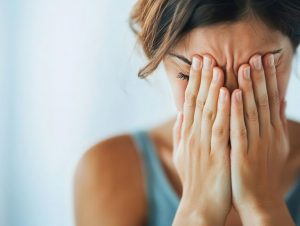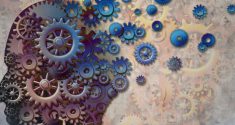When it comes to sleep schedules, people often compromise in order to get everything on their to-do list done first. However, this can be the wrong decision. A new study from the University of Michigan shows that when people’s sleep cycles are out of sync with their internal clocks, or circadian rhythms, it can have a drastic effect on mood. Conversely, however, getting sleep when the body expects to can greatly improve emotional state and alleviate symptoms associated with mood disorders, according to lead author Daniel Forger, a professor in the Department of Mathematics and director of the Michigan Center for Applied and Interdisciplinary Mathematics. The research findings were published in the journal npj Digital Medicine.
Quantitative Information About People’s Circadian Rhythms and Sleep Cycles
It has long been known that sleep affects mood, but mostly in a conceptual, almost light-hearted way. For example, we often use words like “in a bad mood” or “nervous” when talking about this connection. However, previous studies have repeatedly found links between sleep – its duration, quality and interruption – and serious mental health issues, including suicidal risk. “Sleep is important to us, but perhaps not to the degree that we care about depression,” Forger says. However, there is a tremendous amount of research showing that mood affects circadian rhythm and sleep, and that circadian rhythm and sleep affect mood. However, this research has been conducted almost entirely in controlled settings. So Forger and his team set out to find these effects—and ways to use them to improve mood—in the real world.

Misalignment Between the Central Circadian Clock and Sleep Showed the Strongest Negative Association With Mood and Depressive Symptoms
The team was able to extract meaningful features or biomarkers from three different key patterns. There was the central circadian clock, which measures time in the suprachiasmatic nuclei of the brain. It also coordinates the peripheral circadian clocks in other parts of the body. In their study, the team analyzed the peripheral clock in the heart. In the average person, the heart’s peripheral clock knows that it needs to be more active at 2 p.m. than at 2 a.m., Forger said. The last pattern the team was able to measure was the sleep cycles of the medical residents. The team found that a sleep cycle that is out of sync with the peripheral circadian clock—that is, the time of day the heart thinks it is—generally has a negative effect on mood. However, when a person’s core circadian rhythm was out of whack in relation to their sleep cycle, a negative effect was observed when a trainee performed shift work. That is, the misalignment between their sleep and core internal clock was caused by their occupation.
And when this discrepancy affected mood, its effect was more pronounced than in the case of the peripheral discrepancy. “In particular, misalignment between the central circadian clock and sleep showed the strongest negative association with mood and depressive symptoms, including sleep disturbances, appetite problems and even suicidal thoughts,” said Dae Wook Kim, another of the study’s lead authors. Kim helped conduct the study as a postdoc at U-M and is now an assistant professor at the Korea Advanced Institute of Science and Technology. These findings challenge previous assumptions about the uniform effects of circadian disruption across different physiological clocks.
The challenge to those assumptions raises new questions about how and when these disruptions manifest in other populations, including high school students, older adults, and those diagnosed with mental disorders. The team is already beginning to apply their study methodology to some of these groups. It’s not surprising that context matters, the researchers say. After all, students cram for exams and vacationers travel halfway around the world without night shifts or jet lag significantly affecting their mood. However, the study shows that we can understand when these disorders affect us and when a little rest can help by using the technology at our disposal. Or, more specifically, on our wrists. That’s why this is scalable, according to Forger, and the technology could help countless people.







